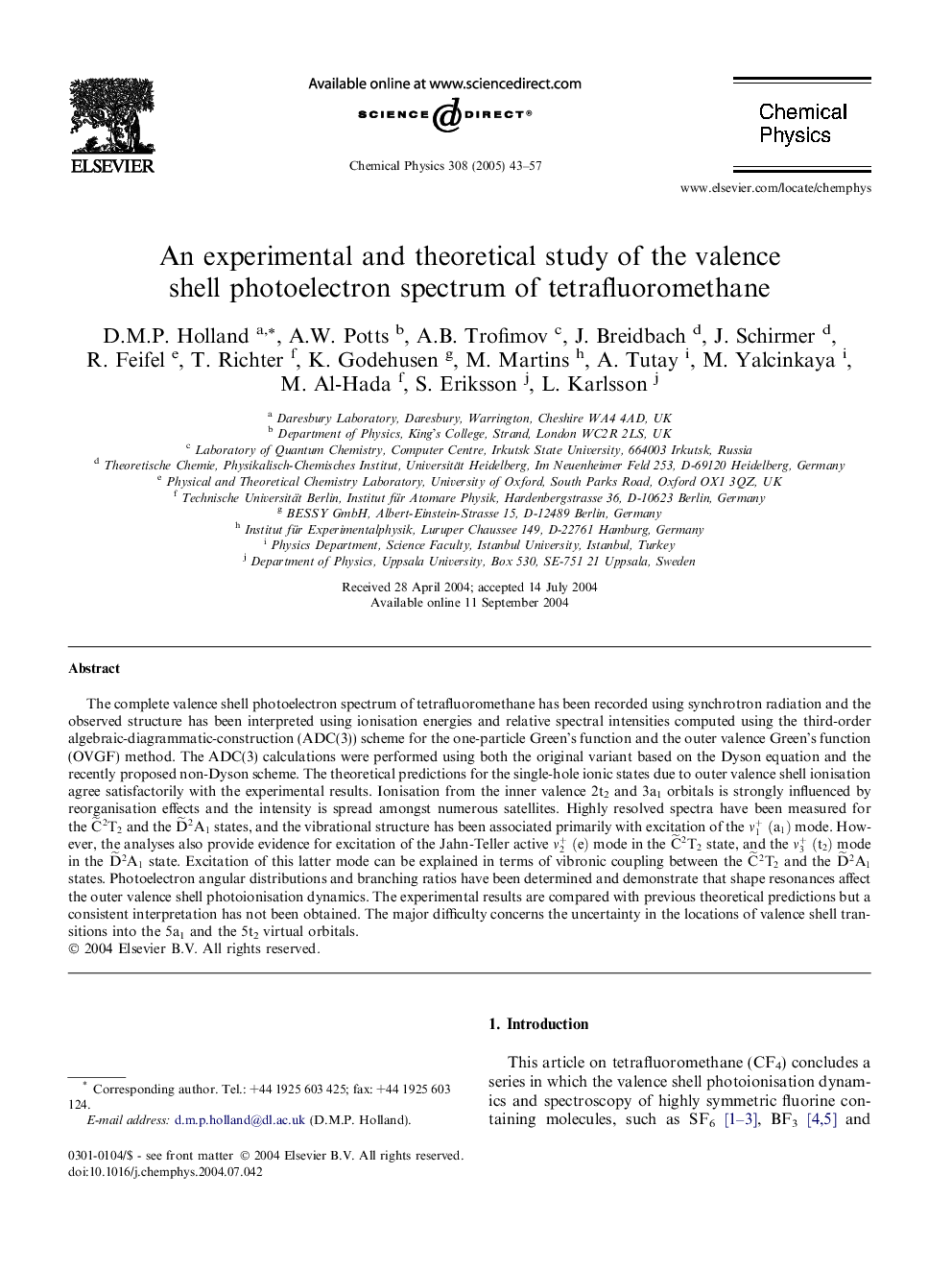| Article ID | Journal | Published Year | Pages | File Type |
|---|---|---|---|---|
| 9575694 | Chemical Physics | 2005 | 15 Pages |
Abstract
The complete valence shell photoelectron spectrum of tetrafluoromethane has been recorded using synchrotron radiation and the observed structure has been interpreted using ionisation energies and relative spectral intensities computed using the third-order algebraic-diagrammatic-construction (ADC(3)) scheme for the one-particle Green's function and the outer valence Green's function (OVGF) method. The ADC(3) calculations were performed using both the original variant based on the Dyson equation and the recently proposed non-Dyson scheme. The theoretical predictions for the single-hole ionic states due to outer valence shell ionisation agree satisfactorily with the experimental results. Ionisation from the inner valence 2t2 and 3a1 orbitals is strongly influenced by reorganisation effects and the intensity is spread amongst numerous satellites. Highly resolved spectra have been measured for the Câ¼2T2 and the Dâ¼2A1 states, and the vibrational structure has been associated primarily with excitation of the ν1+(a1) mode. However, the analyses also provide evidence for excitation of the Jahn-Teller active ν2+(e) mode in the Câ¼2T2 state, and the ν3+(t2) mode in the Dâ¼2A1 state. Excitation of this latter mode can be explained in terms of vibronic coupling between the Câ¼2T2 and the Dâ¼2A1 states. Photoelectron angular distributions and branching ratios have been determined and demonstrate that shape resonances affect the outer valence shell photoionisation dynamics. The experimental results are compared with previous theoretical predictions but a consistent interpretation has not been obtained. The major difficulty concerns the uncertainty in the locations of valence shell transitions into the 5a1 and the 5t2 virtual orbitals.
Related Topics
Physical Sciences and Engineering
Chemistry
Physical and Theoretical Chemistry
Authors
D.M.P. Holland, A.W. Potts, A.B. Trofimov, J. Breidbach, J. Schirmer, R. Feifel, T. Richter, K. Godehusen, M. Martins, A. Tutay, M. Yalcinkaya, M. Al-Hada, S. Eriksson, L. Karlsson,
